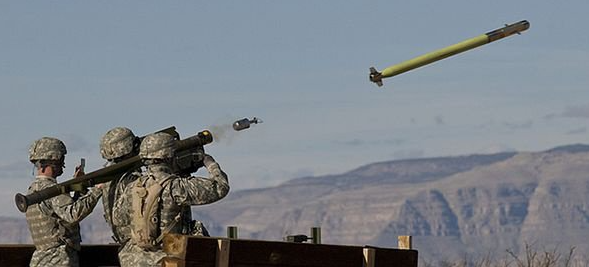Reading Activity
A missile is supported and guided by its launcher through the first few centimeters of motion after motor ignition. Man-portable missile launchers are in the form of tubes; fixed and mobile launchers can be in the form of rails or tubes.
The importance of the launcher (any kind) to a missile flight simulation is that it establishes the initial conditions from which missile flight calculations begin. The initial missile velocity simulated is in the direction in which the launcher points and has a magnitude that represents the actual missile speed when it leaves the constraints of the launcher. If the launcher is being slewed at the time of launch, the angular slewing rate is imparted to the missile, and this is included in the initial conditions of the missile simulation. As the missile travels forward out of the tube or off the rail, the front part of the missile becomes unsupported first. Gravity begins to accelerate the missile nose downward while the rear of the missile is still supported and thus gives the missile a small nose-down angular rate. This is called tip-off and is taken into account in flight simulations with varying degrees of reality, depending on their importance to the objectives of the simulation.
The pointing direction of the launcher at the moment of launch is established by some fire control rule or algorithm. Typically the missile is launched in a direction ahead of the target. The angle ahead of the target is called the lead angle. If the target is at low altitude, the launcher may be positioned at an elevation angle that is higher than the target to prevent the missile from striking the ground. This is called super elevation. The fire control algorithms used to determine the amount of lead and super elevation are usually supplied by the missile manufacturer.
